We had an action packed night, with many more targets than we’ve been observing so far on this run. The AO system wasn’t on its best behaviour, but we have learned to recognize most of its bad moods quickly and we can usually slap it back into shape right away.
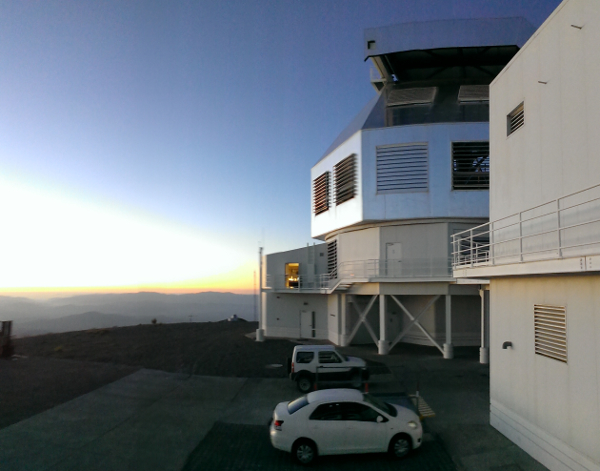
Kate Follette is here, ready to help take up some of the operations load. Our visiting observers tonight were Hector Canovas and Adam Hardy from Universidad de Valparaiso. Here’s a shot of the bleary eyed “aoistas” this morning right before we quit, minus Katie who’s behind the camera, and minus Kate who went to bed too early to get her picture took.
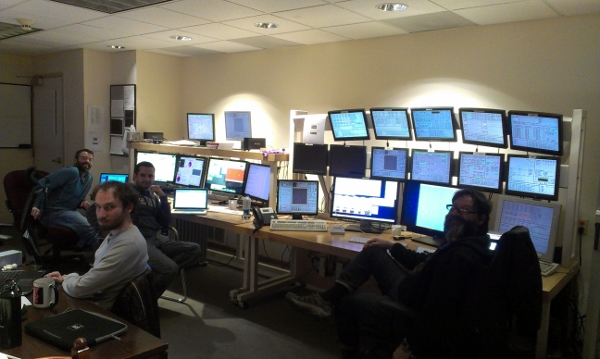
In Kate’s defense, she made it to the half-way point after 24 hours of travel from Tucson.
Most of the targets we looked at for our new friends Hector and Adam were faint and red. When we set up the system for such targets we need to have a good guess how many photons per second the pyramid wavefront sensor (PyWFS – following the obviously correct conventions of Guyon 2006) will get. This can be tricky because our PyWFS has a very wide and very red pass band, something like R+I. So if you use the R magnitude on an M5 star, you’ll set up to run slower and with fewer modes than you need too. It’s worse if you give us the V magnitude. So tonight I whipped up a set of synthetic color corrections, and compared them to our PyWFS’s own estimates.
UPDATE: A day later, we have investigated why the R band colors were weird in the first version of these plots. We are now using a self-consistent set of VRI magnitudes, from the USNO UCAC4 catalog, transformed from APASS gri (AB). I think we can now declare the MagAO WFS pass band done. I’ve updated the next two plots to the latest, most correct version.
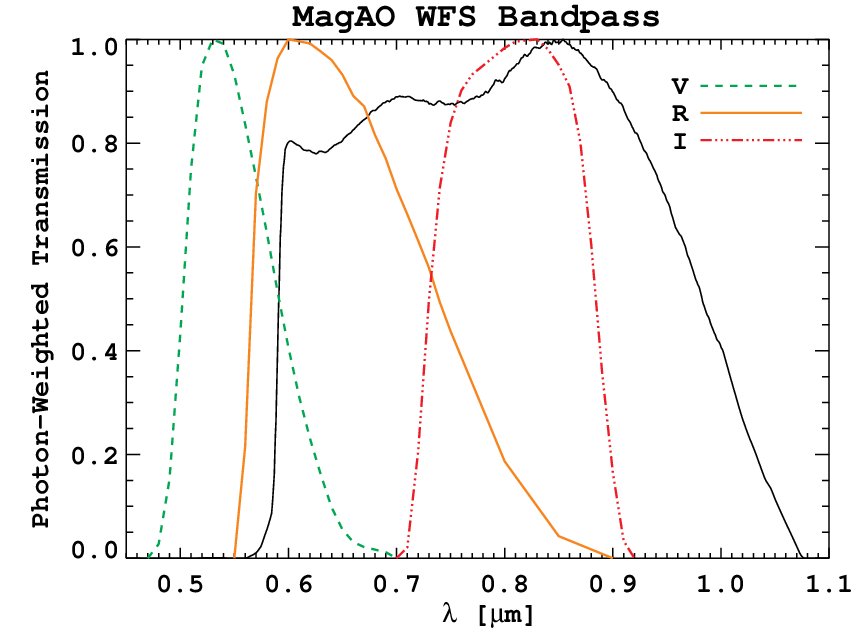
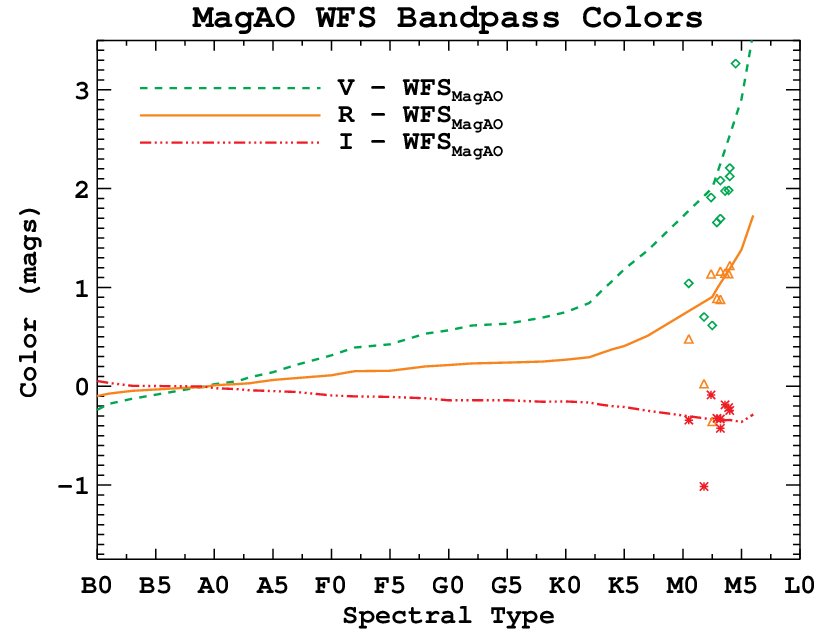
Here’s a fun set of bookends on the night. We took flats at evening and at morning twilight. During this, you can see a really cool pattern on the PyWFS. You can also see the secondary mounting structure lit up by the sun. See the difference?
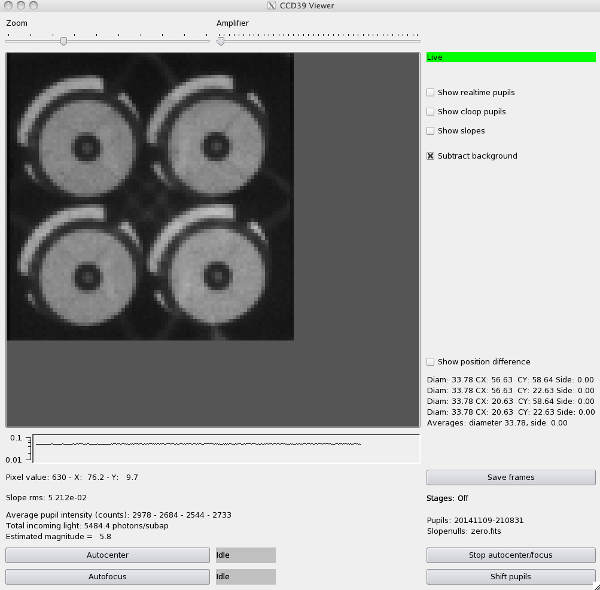
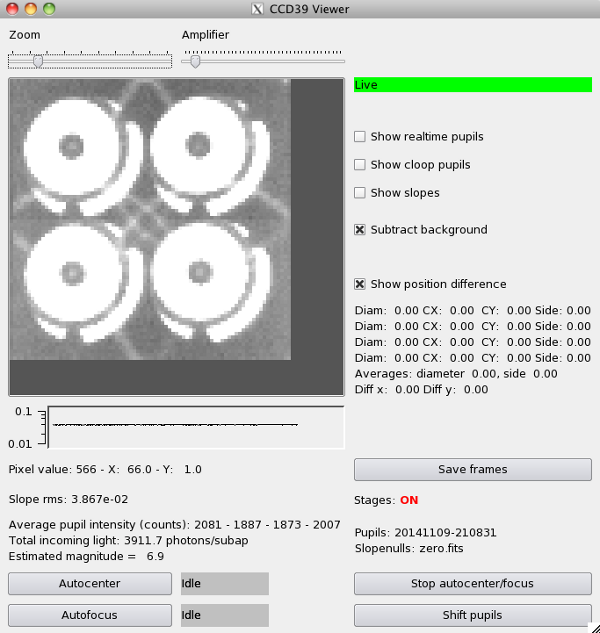
Here’s a just-after-dawn shot to the west, towards the Pacific Ocean.
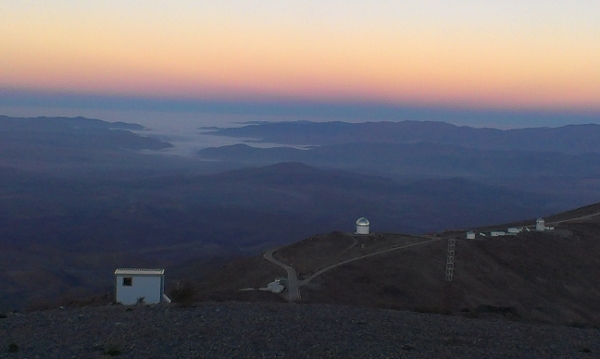
Though you might think this was about the ASM supports being too reflective, the song of the day is for Veteran’s Day.